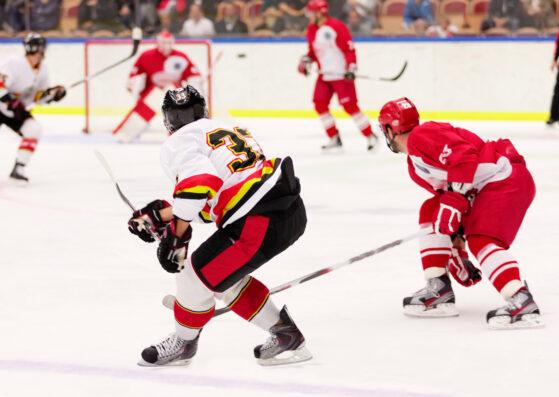New Research Suggests That NHL Players Who Fight More On The Ice Also Live Shorter Lives

While most professional ice hockey games come with a healthy dose of fighting, new research suggests that the behavior may be shortening some hockey players’ lives.
The study, led by Charles Popkin, a specialist in orthopedic sports medicine at Columbia University Irving Medical Center, found that “enforcers”– or players who took part in a lot of fighting– tended to die at younger ages and from different causes, as opposed to their peers.
During the study period, 45 players died. And those who were “enforcers” were approximately 10 years younger at their time of death as compared to other players.
The causes of death also varied and were disproportionately due to car accidents, drug overdose, suicide, and even degenerative brain disease in two cases.
But, the researchers did note that these findings do not prove that recurrent fights on the ice caused the players’ deaths.
“This study is just showing associations, not cause and effect. But it does show that if you’re an NHL ‘fighter,’ you’re dying 10 years earlier and from different causes than other players,” said Popkin.
For the study, the team used time in the penalty box and fights as proxies for the time players were exposed to repetitive head impacts.
Data from over 6,000 NHL players, who were active in the league from 1967 to 2022, was collected. The researchers then identified a group of enforcers– totaling 331 players– who had a minimum of 50 career fights on record.
Additionally, the team identified 183 enforcers who spent an average of at least three minutes in the penalty box each game.

modestil – stock.adobe.com – illustrative purposes only, not the actual people
Then, every single enforcer was compared against another NHL player of similar size, age, position, and overall number of career games but who was not an enforcer.
This comparison revealed no significant difference in the death rates of the two groups, equating to approximately 4%.
However, it was found that, on average, enforcers died at age 47 as opposed to age 57 in the comparison group.
And among the 21 enforcers who passed away, three players died of suicide, two players died of a drug overdose, and two players died due to degenerative brain disease.
On the other hand, no player from the comparison group died due to any of those causes. Instead, cancer was the most common cause of death.
Due to these findings, Popkin has begun to question whether chronic traumatic encephalopathy (CTE) has played a role in the death of enforcers.
According to the Mayo Clinic, CTE is a brain disorder believed to be caused by repeated head injuries.
“It causes the death of nerve cells in the brain, known as degeneration. CTE gets worse over time. The only way to definitively diagnose CTE is after death during an autopsy of the brain.”
CTE has also been linked to other manifestations– such as aggression, personality changes, impulsive behavior, and depression– and has been a topic of much debate in the National Football League (NFL).
Still, the researchers claimed it is impossible to determine whether the deaths of enforcers within this study could be traced back to CTE.
According to Dr. Jesse Mex from Boston University’s CTE Center, it is likely that enforcers suffered a greater amount of head impacts as opposed to the comparison group. Although, without any brain autopsy findings, it is not possible to determine the role CTE played for sure.
Regardless, Popkin is hopeful that these findings will still spark important conversations in the NHL and encourage interventions that make the sport safer for players.
He specifically believes that harsher fighting penalties may be helpful and that the NHL could take a few ideas out of other pro leagues’ playbooks. For instance, players in the NFL, NBA, and MLB will be ejected for fighting and may receive fines or suspensions.
Mez agrees and thinks that the NHL should not wait to curb fighting on the ice until the behavior is definitively linked to heightened CTE risk.
“I think you could get rid of the fighting and make the sport safer for players,” Mez concluded.
To read the study’s complete findings, which have since been published in JAMA Network Open, visit the link here.
If true crime defines your free time, this is for you: join Chip Chick’s True Crime Tribe
In January, This 29-Year-Old Man Mysteriously Vanished Right In The Middle Of New York City
Sign up for Chip Chick’s newsletter and get stories like this delivered to your inbox.
More About:Science